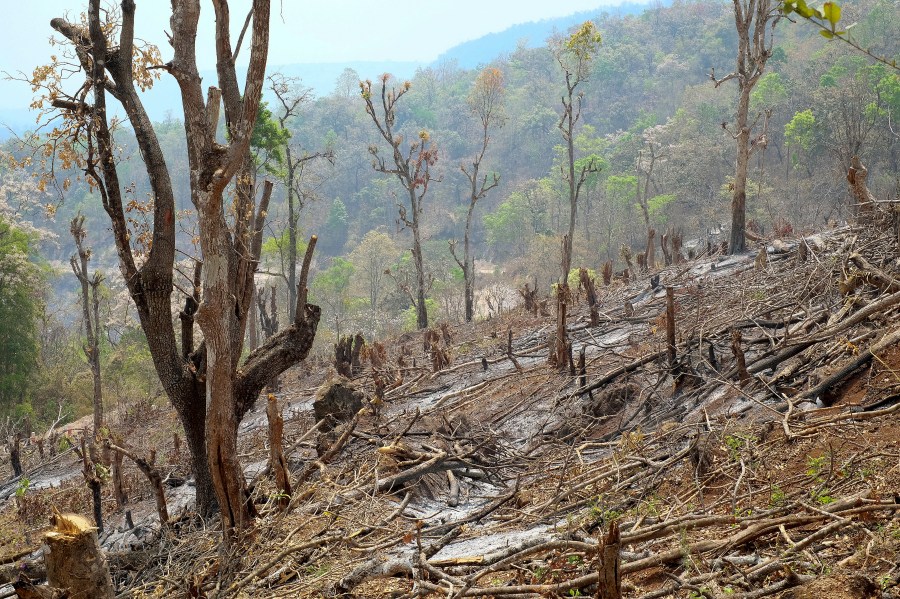The Unexpected Ways A Controlled Burn Can Fight Wildfires

Wildfires claim over 7 million acres of land every year in the United States. These uncontrolled fires threaten the properties and lives of millions of Americans and we cause 90% of them. Devastating blazes have ravaged California for decades; the state experienced 9,260 uncontrolled burns in 2021 alone. So, how can we prevent wildfires from destroying millions of acres, minimize their damage to the environment and ensure people are kept safe? A controlled burn, sometimes called a prescribed fire, is one answer to protect the environment. This carefully planned and managed fire recycles nutrients back into the soil, protects against climate change and mitigates the effects of extreme wildfires.
How Does a Controlled Burn Affect the Environment?
It may seem counter intuitive to intentionally start fires as a preventative measure, but a controlled burn benefits the environment in many different ways. Climate change is causing wildfires to worsen due to the increased lack of humidity, record temperatures and increased risk of droughts. When forests and other landscapes aren’t maintained properly, small trees, leaves, brush and undergrowth create the perfect storm for fires to ravage the environment. These pick up speed and intensity as the fires consume overgrown vegetation. Prescribed burns act as medicine for the environment managing overgrowth before it can become fuel for wildfires. Indigenous peoples have learned that harnessing the helpful power of prescribed fires can shape the landscape and environment and create healthier flora and fauna as an aftereffect.
The soil of a recently burned land is rich in nutrients. The ashes of burned vegetation act as fertilization and the ground becomes fertile and nutrient-rich essentially overnight, a process that would typically take years of natural decomposition. This soil allows seedlings to take root and grow. Controlled burns also clear up the undergrowth, allowing young trees to grow unhindered. Certain trees, like the pine tree species, require fires before their cones open up to release seeds. Animals benefit from these burns as well. Controlled burns manage invasive plant and insect species, returning the environment to the native fauna of the region.
Prescribed burns enrich the soil, reinvigorate the earth, protect against the devastating effects of uncontrolled wildfires as well as provide benefits for native wildlife. While these benefits cannot be understated, some scientists believe there are a few downsides to prescribed fires. The smoke can cause both short-term irritation and long-term negative effects on the eyes and respiratory systems of those who encounter it. Additionally, noxious plants such as poison oak, ivy and sumac, when burned can cause rashes and respiratory irritation. Regardless of these risks, controlled burns are a necessity for wildfire prevention and climate preservation.

How Does It Work?
There are two common types of controlled burns intended for specific applications and circumstances. Researchers and fire teams create an extensive burn plan or prescription based on area conditions and determine the best type of controlled burn to complete their objectives.
Broadcast burning involves setting fire to many acres or hectares of land at a time. This method is used for areas that have little forest canopy cover and is only employed when windy conditions are not present. These fires can easily become uncontrollable if weather conditions change, so fire teams exercise the utmost caution when employing this burning technique. Broadcast burning is used to reduce the amount of fuel in the area that could potentially worsen a wildfire. It is also used for resource management to reinvigorate the soil.
Pile burning is better suited for dense forest areas and areas that are prone to uncontrolled wildfires. These piles consist of branches, trees and other foliage the forestry service has trimmed from the area in an effort to reduce the amount of fuel. Certain conditions must be met for the fire teams to prescribe a pile burn. These include smoke dispersal conditions (wind), precipitation in the area and fuel moisture conditions.
Indigenous cultures have employed controlled burns for thousands of years – essentially paving the way for modern prescription fires. Native populations used a variety of methods to control their fires. Learning from their techniques will help current researchers and fire teams develop better control strategies and fire management plans.

Indigenous Fire Practices
According to the National Park Service, indigenous tribes from Alaska, Hawaii, and the mainland states used fire as a way to clear land for agriculture, promote biodiversity and manage the land they lived on. Indigenous people regarded the land as sacred and worthy of the utmost respect. In keeping with this belief, native populations employed the practice of “cultural burning” during which small fires were ritualistically lit to promote the health of animals that provide food, clothing and more, as well as promote the growth of new vegetation. Certain species are culturally important to native populations and cultural burning enhances the growth of these species. Historically, Native Americans also used fire as a way to drive hunted bison toward a desired location, concentrating the hunting area so tribes could have an ample food supply. This remarkable effort served dual purposes: the people were fed and the land was restored.
Indigenous people exhibited incredible patience. They recognized that controlled burns, while inconvenient as scorched land was in the short-term, were necessary to enhance the biomes in which they lived, which in turn enhanced their quality of life. Much can be learned by studying the practices of indigenous people, as they utilized practices that many have forgotten the relevance of.
Taking Back Control
Utilizing the practice of prescribed fires returns control of the wilderness to the people. Although humans are responsible for the majority of wildfires, we now know that we can mitigate the devastating effects of these uncontrolled blazes by starting preventative controlled burns. Not only will we be preserving the native species of plants and animals, but we also will be minimizing the wreckage caused by cigarette, camping and electrical fires.





